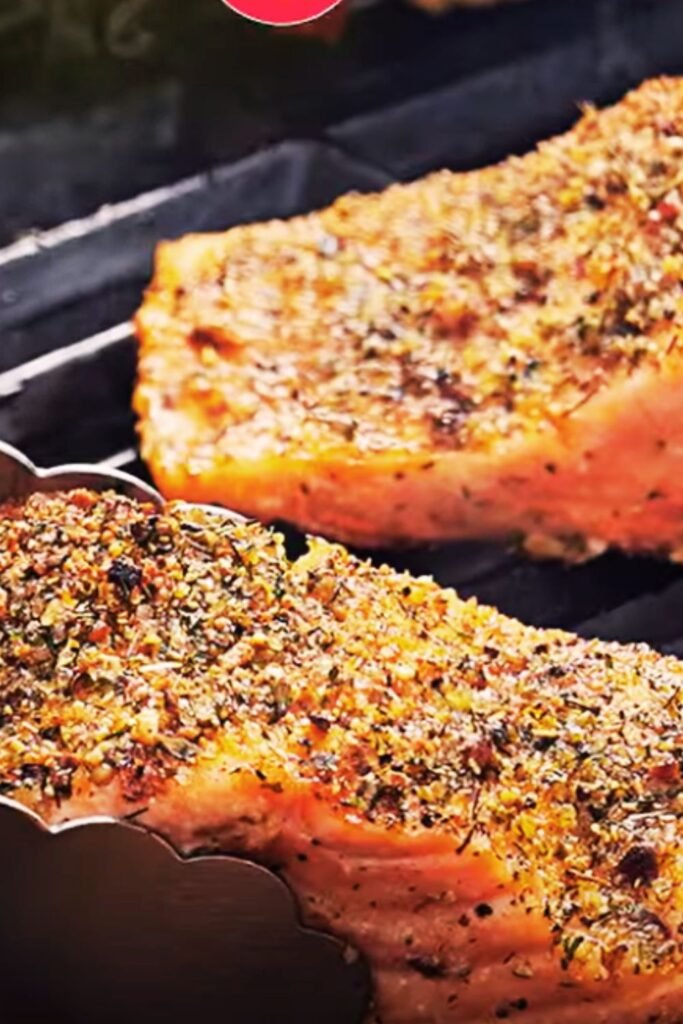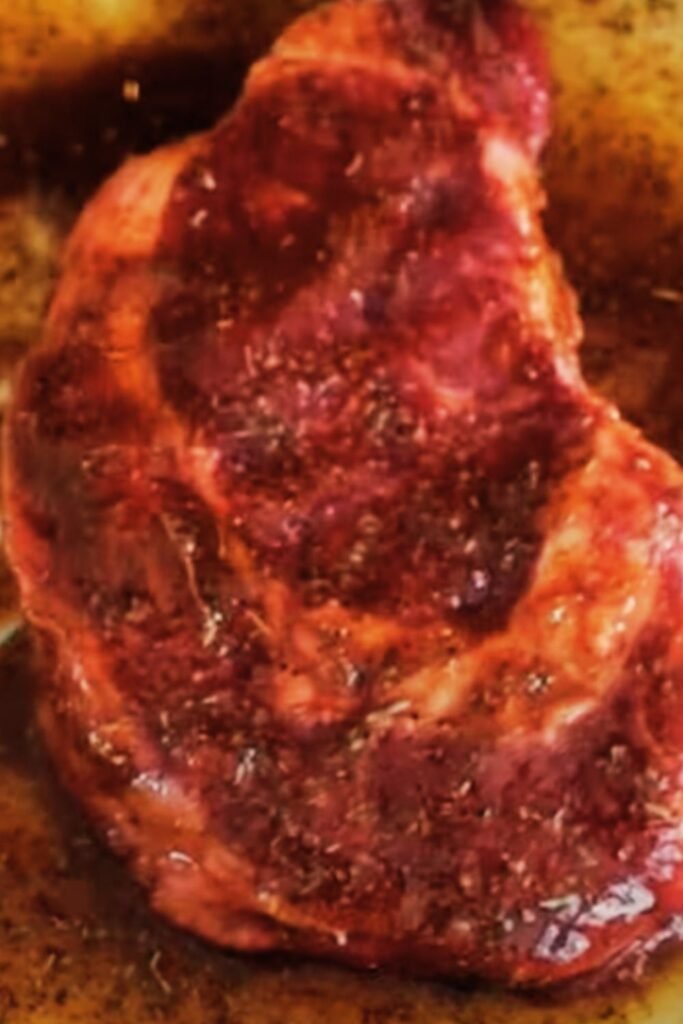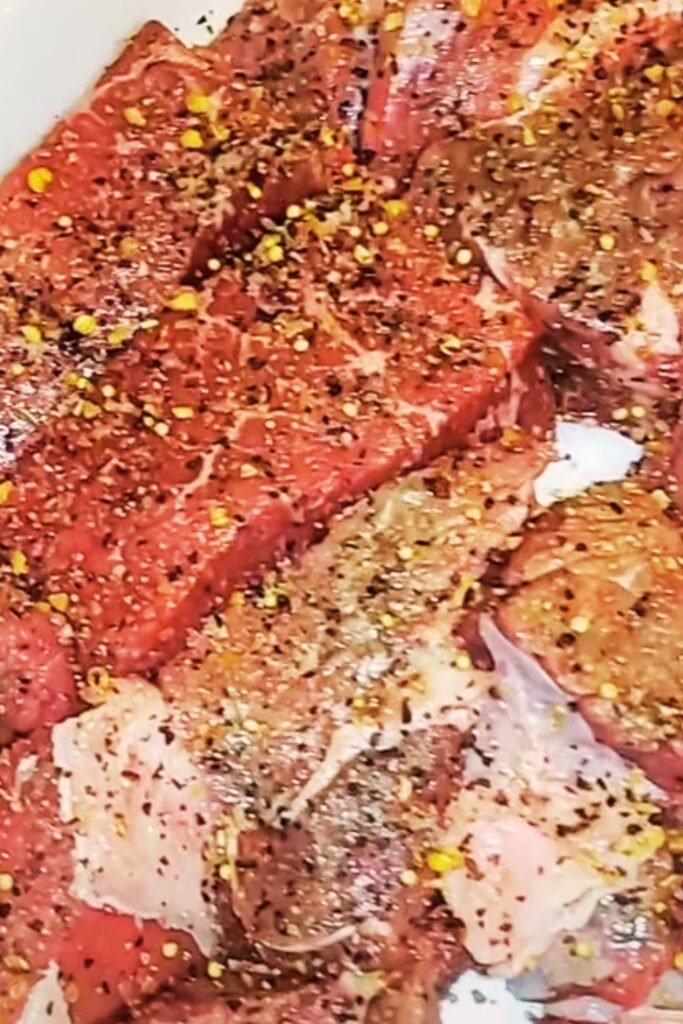When I first discovered McCormick’s Montreal Steak Seasoning years ago, it completely transformed my approach to cooking beef. That perfect balance of garlic, pepper, and herbs created flavors that made even the simplest cuts of meat taste like restaurant-quality dishes. However, after countless trips to the grocery store and watching the prices creep up, I decided to crack the code and create my own version at home.
After months of experimentation and taste testing, I’ve developed what I believe is the closest copycat recipe you’ll find anywhere. Not only does this homemade version taste nearly identical to the store-bought blend, but it also costs a fraction of the price and allows you to customize the heat level and salt content to your personal preferences.
What Makes Montreal Steak Seasoning Special?
Montreal steak seasoning originated from the smoked meat preparations used in Montreal’s famous delis. The seasoning blend traditionally combines coarse salt, cracked black pepper, garlic, onion, and various herbs and spices that create a robust, savory flavor profile perfect for grilled meats.
Key Characteristics:
- Bold, savory flavor with prominent garlic and pepper notes
- Coarse texture that creates an appealing crust when grilled
- Balanced salt content that enhances rather than overwhelms
- Versatile application beyond just steak
The commercial version by McCormick has become the gold standard, but creating your own allows for fresher spices and customization opportunities that simply aren’t available with pre-made blends.
Essential Ingredients Breakdown
Understanding each component helps you appreciate why this blend works so perfectly together. Here’s my detailed analysis of every ingredient:
Primary Flavor Components
Coarse Salt (Kosher or Sea Salt)
- Forms the base of the seasoning
- Helps draw moisture for better flavor penetration
- Creates texture contrast when grilling
Cracked Black Pepper
- Provides the signature heat and bite
- Must be coarsely ground for authentic texture
- Fresh cracking ensures maximum flavor impact
Granulated Garlic
- Delivers savory umami depth
- More concentrated than fresh garlic
- Doesn’t burn as easily during high-heat cooking
Onion Powder
- Adds sweet, savory complexity
- Complements the garlic perfectly
- Provides background flavor support
Supporting Spices and Herbs
Paprika
- Contributes mild sweetness and color
- Helps create appealing visual presentation
- Adds subtle smoky notes
Dried Dill
- Traditional herb in Montreal seasoning
- Provides fresh, slightly tangy flavor
- Balances the heavier spices
Coriander Seeds (Ground)
- Adds citrusy, slightly sweet notes
- Traditional spice in Montreal blends
- Enhances overall complexity
Red Pepper Flakes
- Provides controllable heat level
- Adds visual interest with color specks
- Can be adjusted based on preference

My Perfected Copycat Recipe
After extensive testing and comparison with the original McCormick blend, here’s my recipe that delivers virtually identical results:
Ingredients List
| Ingredient | Amount | Purpose | Notes |
|---|---|---|---|
| Coarse kosher salt | 3 tablespoons | Base flavor, texture | Use Diamond Crystal or Morton |
| Cracked black pepper | 2 tablespoons | Primary heat, signature flavor | Freshly cracked preferred |
| Granulated garlic | 1 tablespoon | Savory depth | Not garlic powder |
| Onion powder | 1 tablespoon | Sweet savory balance | Fine grind works best |
| Paprika | 2 teaspoons | Color, mild sweetness | Hungarian or Spanish |
| Dried dill | 1 teaspoon | Traditional herb flavor | Crush between fingers |
| Ground coriander | 1 teaspoon | Citrusy complexity | Freshly ground preferred |
| Red pepper flakes | 1/2 teaspoon | Adjustable heat | Optional, to taste |
Step-by-Step Instructions
- Prepare Your Workspace
- Gather all ingredients and measuring tools
- Use a medium mixing bowl for combining
- Have an airtight storage container ready
- Measure Precisely
- Use level measurements for consistency
- Double-check quantities against the recipe
- Consider your personal taste preferences
- Combine Dry Ingredients
- Start with the salt as your base
- Add black pepper and mix thoroughly
- Incorporate garlic and onion powder
- Add Remaining Spices
- Crush dried dill between your fingers before adding
- Sift in paprika to prevent clumping
- Add coriander and red pepper flakes last
- Mix Thoroughly
- Whisk ingredients together for 30 seconds
- Break up any clumps with a fork
- Ensure even distribution of all components
- Store Properly
- Transfer to airtight container immediately
- Label with date and contents
- Store in cool, dry place away from light

Nutritional Information and Health Benefits
Understanding the nutritional profile helps you make informed decisions about using this seasoning blend in your cooking.
Nutritional Breakdown (Per Teaspoon)
| Nutrient | Amount | % Daily Value |
|---|---|---|
| Calories | 5 | <1% |
| Total Fat | 0g | 0% |
| Sodium | 480mg | 20% |
| Total Carbs | 1g | <1% |
| Dietary Fiber | 0g | 0% |
| Sugars | 0g | 0% |
| Protein | 0g | 0% |
| Potassium | 15mg | <1% |
| Iron | 2% DV | 2% |
Health Considerations
Positive Aspects:
- Low calorie flavor enhancement
- No artificial preservatives when homemade
- Contains antioxidants from herbs and spices
- Provides flavor without added sugars
Things to Watch:
- High sodium content requires moderation
- May not be suitable for low-sodium diets
- Adjust quantities for dietary restrictions
Application Techniques for Best Results
The way you apply Montreal steak seasoning significantly impacts the final flavor and texture of your dishes. I’ve learned these techniques through years of experimentation.
Timing Guidelines
For Steaks and Chops:
- Apply 40-60 minutes before cooking for penetration
- Pat meat dry before seasoning application
- Allow seasoning to form a light crust
For Roasts:
- Season 2-4 hours ahead or overnight
- Refrigerate seasoned meat uncovered
- Bring to room temperature before cooking
For Quick Cooking:
- Apply immediately before cooking
- Press seasoning gently into surface
- Use slightly more than normal amounts
Application Methods
The Press Method:
- Sprinkle seasoning evenly over surface
- Press firmly with clean hands
- Flip and repeat on other side
The Rub Method:
- Massage seasoning into meat fibers
- Work in circular motions
- Ensure complete coverage

Versatile Usage Beyond Steak
While this seasoning excels on beef, I’ve discovered numerous other applications that showcase its versatility.
Protein Applications
| Protein Type | Application Method | Cooking Notes |
|---|---|---|
| Pork chops | Rub 30 minutes prior | Excellent with bone-in cuts |
| Chicken thighs | Under skin application | Crispy skin results |
| Fish fillets | Light dusting | Use sparingly, strong flavor |
| Lamb chops | Traditional rub method | Complements gamey flavors |
| Turkey breast | Herb butter mixture | Perfect for roasting |
| Pork tenderloin | Marinade component | Combine with oil |
Vegetable and Side Dish Uses
Roasted Vegetables:
- Potatoes respond exceptionally well
- Brussels sprouts gain savory depth
- Root vegetables develop complex flavors
Grilled Corn:
- Mix with butter for compound spread
- Apply before or after grilling
- Creates restaurant-quality results
French Fries and Potato Wedges:
- Toss with oil before baking
- Sprinkle on fresh-cut fries
- Elevates frozen potato products
Storage and Shelf Life Optimization
Proper storage ensures your homemade seasoning maintains peak flavor and potency for months.
Storage Container Options
| Container Type | Pros | Cons | Recommended Use |
|---|---|---|---|
| Glass jars | Non-reactive, visible contents | Can break, light exposure | Daily use, small batches |
| Plastic containers | Lightweight, unbreakable | May absorb odors | Bulk storage |
| Metal tins | Light protection, durable | May react with spices | Long-term storage |
| Vacuum bags | Space efficient, freshness | Single use, not reusable | Bulk preparation |
Freshness Maintenance Tips
Environmental Factors:
- Store in temperatures below 70°F
- Avoid humidity and moisture exposure
- Keep away from direct sunlight
- Maintain consistent storage conditions
Quality Indicators:
- Vibrant color indicates freshness
- Strong aroma when container opens
- No clumping or moisture visible
- Spices retain individual characteristics
Cost Comparison Analysis
Creating your own Montreal steak seasoning offers significant financial advantages, especially for frequent users.
Financial Breakdown
| Item | Store-Bought Cost | Homemade Cost | Savings |
|---|---|---|---|
| Per ounce | $3.50 | $1.25 | $2.25 |
| Annual usage (4 oz) | $14.00 | $5.00 | $9.00 |
| Bulk preparation (16 oz) | $56.00 | $20.00 | $36.00 |
Additional Benefits:
- Fresher ingredients guarantee better flavor
- Customization options unavailable commercially
- No artificial preservatives or additives
- Control over sodium content
Troubleshooting Common Issues
Even experienced cooks encounter challenges when making spice blends. Here are solutions to common problems I’ve encountered.
Flavor Problems and Solutions
Too Salty:
- Reduce salt by 25% in next batch
- Add more herbs and spices to balance
- Dilute current batch with unsalted spices
Lacks Heat:
- Increase red pepper flakes gradually
- Add cayenne pepper in small amounts
- Include white pepper for different heat profile
Garlic Flavor Too Strong:
- Reduce granulated garlic by half
- Balance with additional onion powder
- Let flavors meld for 24 hours before judging
Poor Texture:
- Ensure coarse grind on black pepper
- Avoid over-processing in spice grinder
- Sift mixture to remove fine particles
Storage Issues
Clumping:
- Add rice grains to absorb moisture
- Store with desiccant packets
- Break up clumps with fork before use
Loss of Potency:
- Replace ground spices every 6 months
- Store whole spices and grind as needed
- Keep containers tightly sealed
Recipe Variations and Customizations
One major advantage of making your own seasoning is the ability to customize flavors to your exact preferences.
Heat Level Variations
Mild Version:
- Omit red pepper flakes entirely
- Reduce black pepper by 1/3
- Add extra herbs for flavor complexity
Medium Heat:
- Use recipe as written
- Adjust red pepper flakes to taste
- Consider adding white pepper
Spicy Version:
- Double red pepper flakes
- Add 1/4 teaspoon cayenne pepper
- Include 1/2 teaspoon hot paprika
Herb Modifications
| Herb Addition | Flavor Profile | Usage Notes |
|---|---|---|
| Dried thyme | Earthy, subtle | Replace half the dill |
| Rosemary (ground) | Pine-like, strong | Use sparingly, 1/4 teaspoon |
| Oregano | Mediterranean, robust | Works well with lamb |
| Sage | Savory, slightly bitter | Excellent for pork |
| Marjoram | Sweet, delicate | Lighter alternative to oregano |
Serving Suggestions and Meal Ideas
This versatile seasoning opens up countless culinary possibilities beyond the traditional steak application.
Complete Meal Concepts
Classic Steakhouse Dinner:
- Season ribeye steaks 45 minutes prior
- Pair with Montreal-seasoned roasted potatoes
- Serve with grilled asparagus
- Include dinner rolls with herb butter
Backyard BBQ Spread:
- Montreal-seasoned burger patties
- Grilled corn with seasoned butter
- Potato salad with seasoning blend
- Grilled vegetable medley
Weeknight Family Dinners:
- Seasoned pork chops with apple stuffing
- Montreal-spiced roasted chicken thighs
- Seasoned meatloaf with vegetables
- Herb-crusted baked salmon
Quick Cooking Applications
15-Minute Meals:
- Pan-seared seasoned chicken breasts
- Quick-grilled seasoned pork tenderloin
- Broiled seasoned fish fillets
- Stir-fried seasoned beef strips
Advanced Techniques and Professional Tips
After years of perfecting this recipe, I’ve developed several advanced techniques that elevate the final results.
Flavor Layering Methods
Double Seasoning Technique:
- Apply light coating initially
- Cook halfway through desired doneness
- Add second layer for enhanced crust
Compound Integration:
- Mix seasoning into softened butter
- Create flavored oils with the blend
- Incorporate into marinades and brines
Professional Presentation
Crust Development:
- Pat proteins completely dry before seasoning
- Allow seasoning to rest and adhere
- Use high heat for initial searing
Visual Appeal:
- Reserve small amount for final garnish
- Create appealing color contrast
- Ensure even distribution for photography
Frequently Asked Questions
Q: How long does homemade Montreal steak seasoning last? My homemade blend maintains peak flavor for 8-12 months when stored properly in an airtight container. I always label my containers with the preparation date and replace the blend when the aroma starts to fade or after one year, whichever comes first.
Q: Can I substitute table salt for kosher salt in this recipe? While you can substitute table salt, I don’t recommend it. Table salt is much finer and more concentrated, so you’d need to reduce the amount by about half. Kosher salt provides the coarse texture that’s essential for authentic Montreal seasoning, and it adheres better to meat surfaces.
Q: Is it possible to make this seasoning without red pepper flakes? Absolutely! The red pepper flakes add heat but aren’t essential to the core flavor profile. I’ve made versions without them for family members who prefer milder seasonings, and the results are still excellent. You might want to add a bit more black pepper to maintain the overall spice level.
Q: Why does my homemade version taste different from the store-bought blend? Several factors can cause variations: the freshness of your spices, the specific brands you use, and the coarseness of your black pepper. I’ve found that using freshly cracked black pepper and high-quality paprika makes the biggest difference. Also, let your blend sit for 24 hours before using it – the flavors need time to marry together.
Q: Can I use this seasoning on vegetables? This seasoning works wonderfully on vegetables! I particularly love it on roasted potatoes, grilled corn, and Brussels sprouts. For vegetables, I typically use about half the amount I’d use on meat since vegetables have more delicate flavors. Toss vegetables with a little oil first to help the seasoning adhere.
Q: Should I grind whole spices or buy pre-ground for this recipe? I prefer grinding whole spices when possible, especially for the coriander and black pepper. Whole spices retain their flavor much longer than pre-ground versions. However, if you use pre-ground spices, make sure they’re relatively fresh – ideally purchased within the last six months.
Q: Can I make larger batches of this seasoning? I regularly make quadruple batches of this recipe, especially during grilling season. The ratios scale up perfectly. Just make sure you have adequate storage containers and divide the large batch into smaller portions if you won’t use it all within a few months. This prevents repeatedly opening one large container and exposing all the seasoning to air.
Q: What’s the best way to apply this seasoning to ensure even coverage? I’ve found the most effective method is to sprinkle the seasoning from about 6 inches above the meat, then gently press it into the surface with clean hands. Turn the meat and repeat on the other side. For thicker cuts, I sometimes score the surface lightly before applying the seasoning to help it penetrate better.
Creating your own Montreal steak seasoning has become one of my favorite kitchen projects. Not only do you save money and ensure fresher ingredients, but you also gain the satisfaction of crafting something delicious from scratch. This recipe has served me well for years, and I’m confident it will become a staple in your spice collection too.
The beauty of this homemade version lies not just in its cost-effectiveness, but in the control it gives you over every aspect of the flavor profile. Whether you prefer more heat, less salt, or additional herbs, you can adjust this base recipe to create your perfect seasoning blend.
I encourage you to start with this recipe as written, then experiment with modifications based on your family’s preferences. Keep detailed notes about what works and what doesn’t – these records will help you perfect your personal version over time. The journey of creating and refining your own spice blends is one of the most rewarding aspects of serious home cooking.